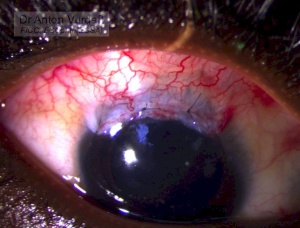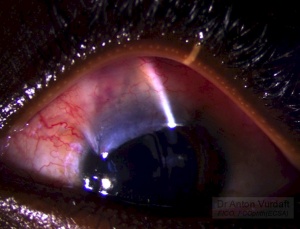Colleagues from Ethiopia have done a wonderful Study on applicability of simple Amsler grid to test for visual fieldndefects of central 10 degree field. And they actually found that this works! A usual bkack-on-white Amsler grid was sensitive and specific (80% and 90% accordingly) in comparison with threshold 10 degree Humphrey visual field test. So the defects at the Amsler grid correlated good with the real field losses. A useful additional test for the scarce people/equipment resources!
PLoS One. 2020 Mar 10;15(3):e0230017.
Amsler Grid Test for Detection of Advanced Glaucoma in Ethiopia
Girum W Gessesse 1, Lemlem Tamrat 1, Karim F Damji 2
Affiliations
1Department of Ophthalmology, St Paul’s Hospital Millennium Medical College, Addis Ababa, Ethiopia.
2Department of Ophthalmology and Visual Sciences, University of Alberta, Edmonton, Canada.Abstract
Objective: This study was done to determine the validity of amsler grid test black on white (BOW), as well as white on black (WOB) for identifying central visual field (VF) defects in patients with advanced glaucoma.Design: Prospective study.
Participants: We prospectively included 100 consecutive eyes of 88 adult patients with advanced glaucoma and 100 eyes of 100 normal individuals. We used a lottery method to choose the side of the eye for the control groups.
Methods: All participants had reliable Humphrey 10-2 Swedish Interactive Threshold Algorithm (SITA) standard VF. Both the BOW and WOB amsler grid tests were done for each group. Sensitivity, specificity, and positive and negative predictive values of the amsler grid scotoma area were calculated with the 10-2 VF as the reference standard.
Results: The mean ± standard deviation (SD) of age and the 10-2 VF mean deviation (MD) of advanced glaucoma eyes were 59.8 ± 11.8 (range 34-84) years and -19.94 ± 9.8(range -34.98–0.52) respectively. Among 108 eyes with normal 10-2 VF test, 103 had a normal BOW amsler grid test and 5 had an abnormal BOW test. Among 92 eyes with an abnormal 10-2 VF test, 74 had an abnormal and 18 had normal BOW amsler grid test. Sensitivity, specificity, and positive and negative predictive values of the BOW amsler grid test were 80.4%, 95.4%, 93% and 85.1% respectively whereas that of the WOB amsler grid test were 71.7%, 95.4%, 93% and 72.8% respectively.
Conclusion: The sensitivity and specificity of both BOW and WOB amsler grid tests were high in detecting VF defects in advanced glaucoma.

